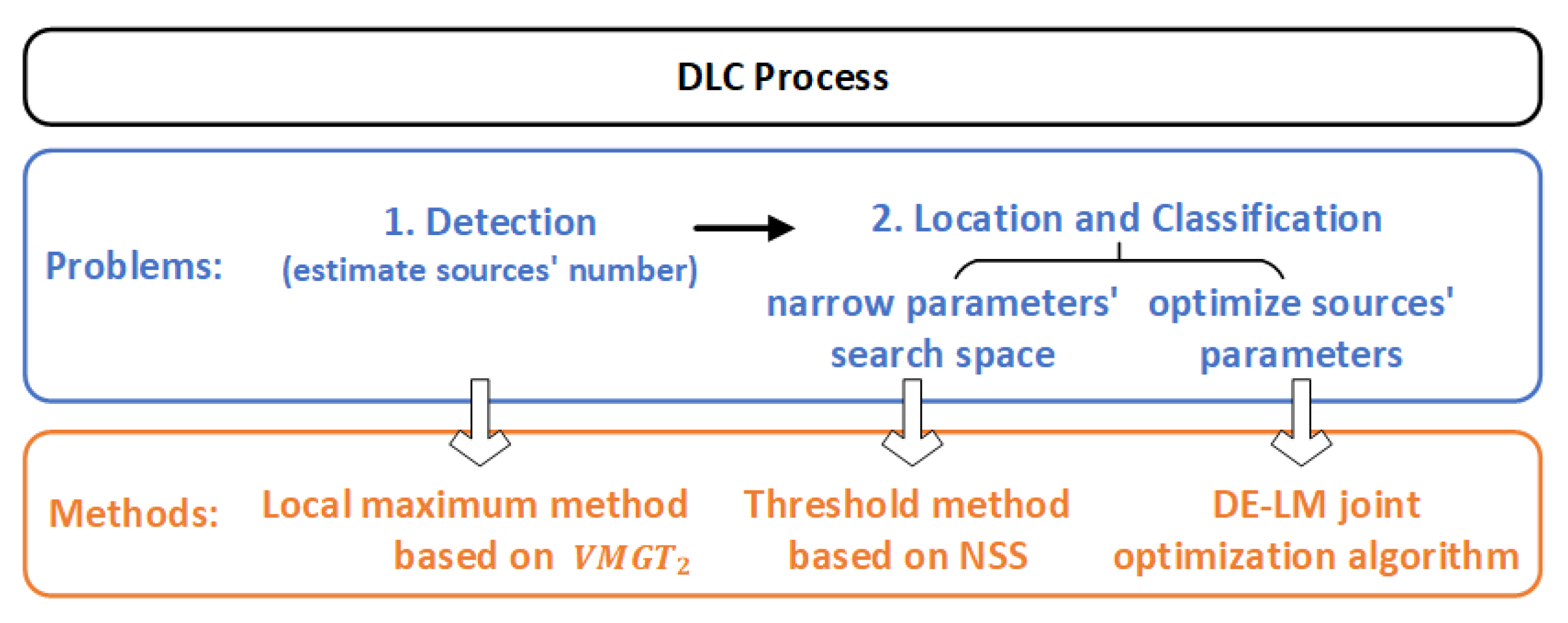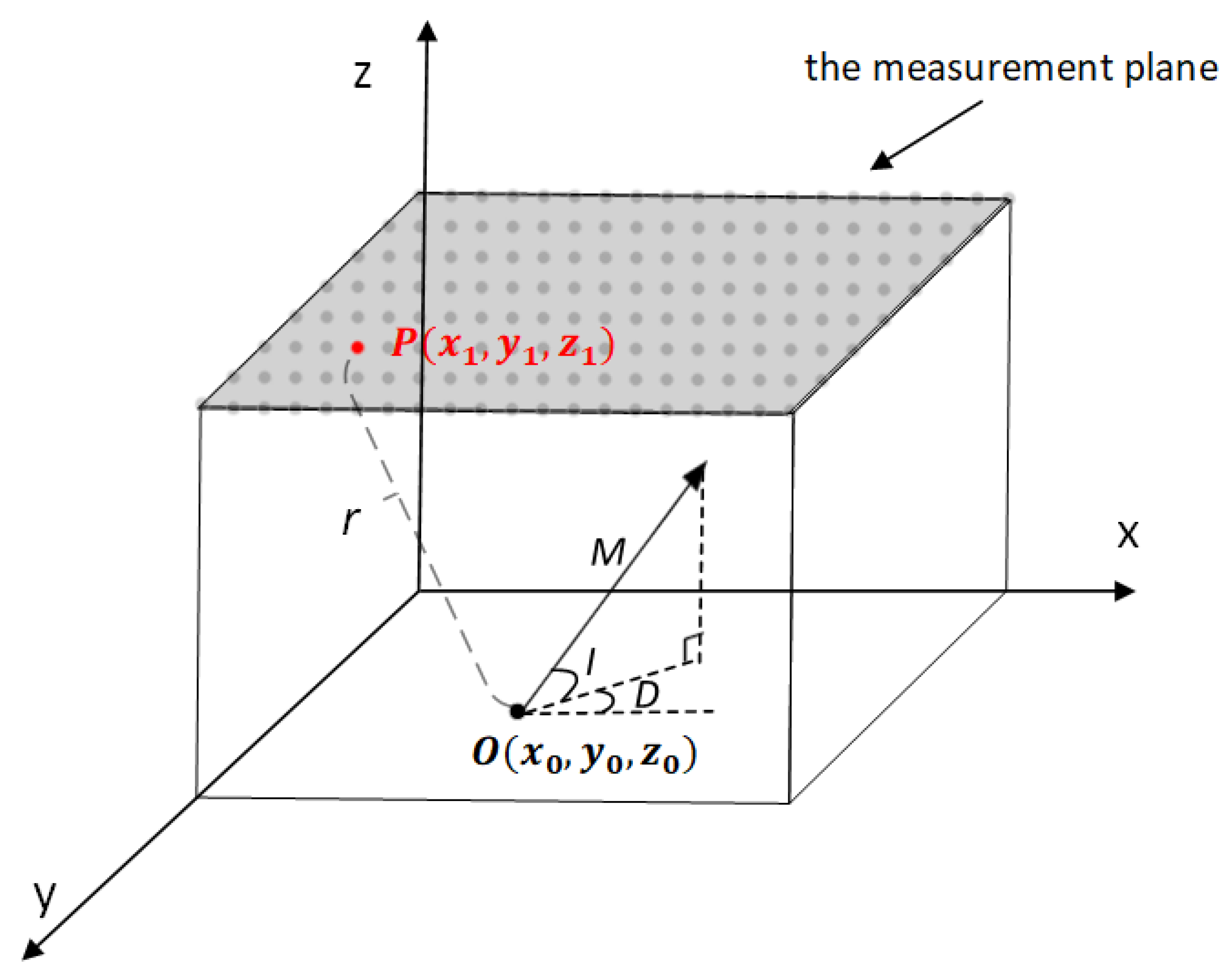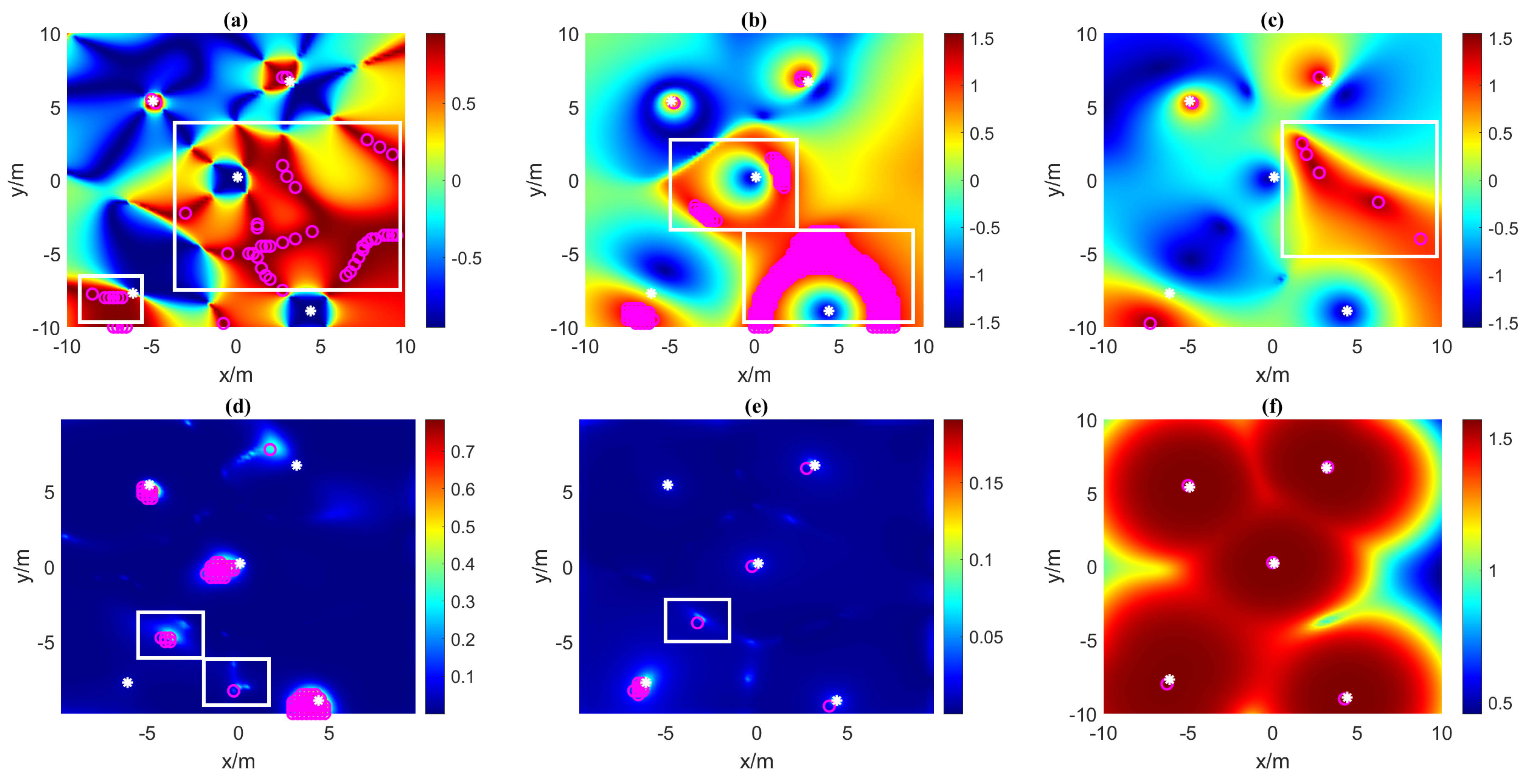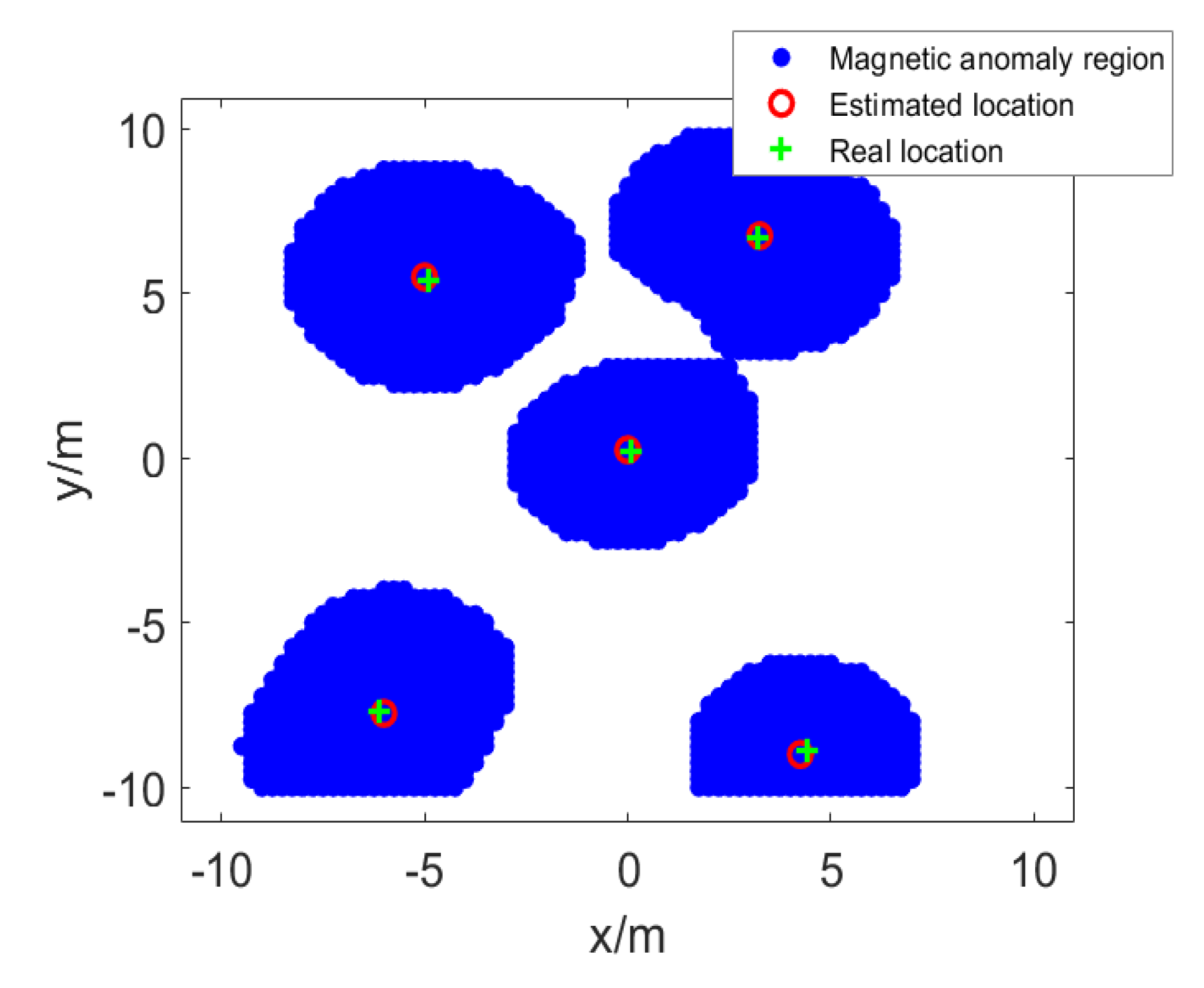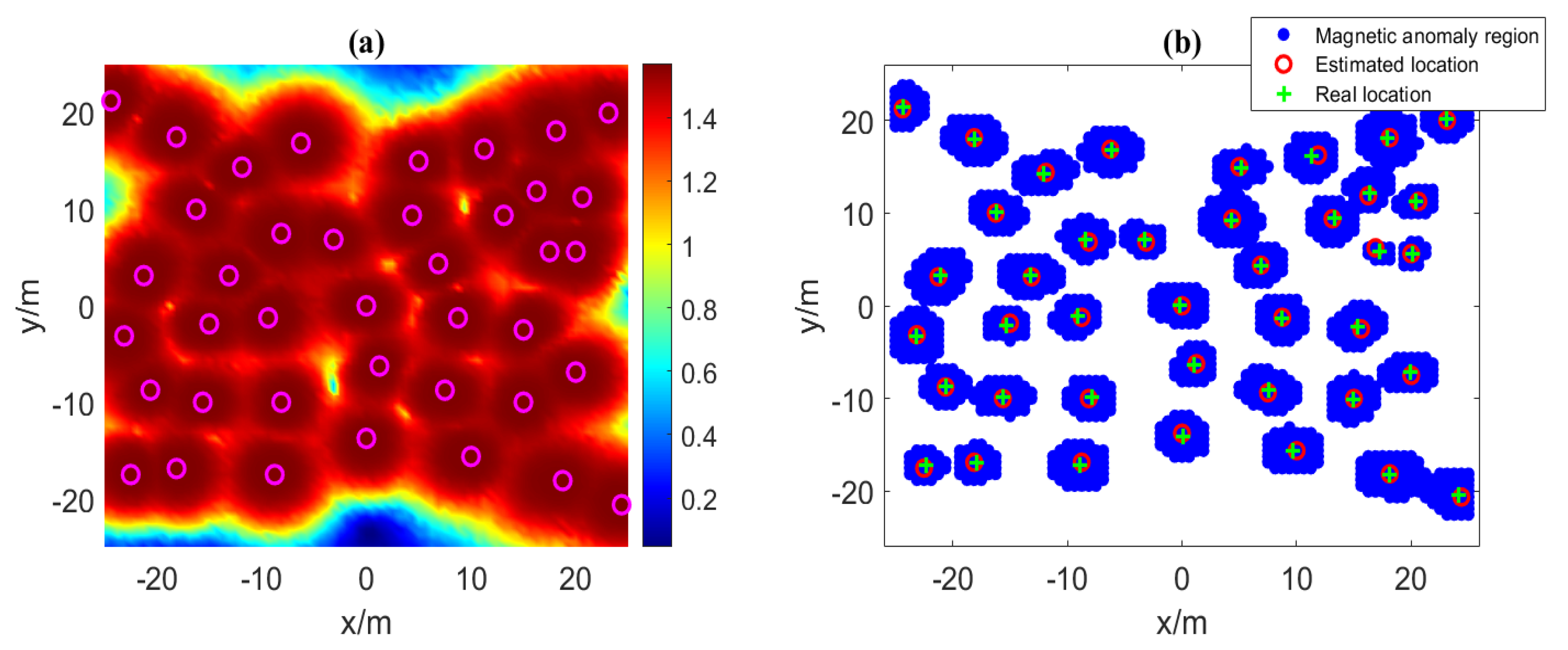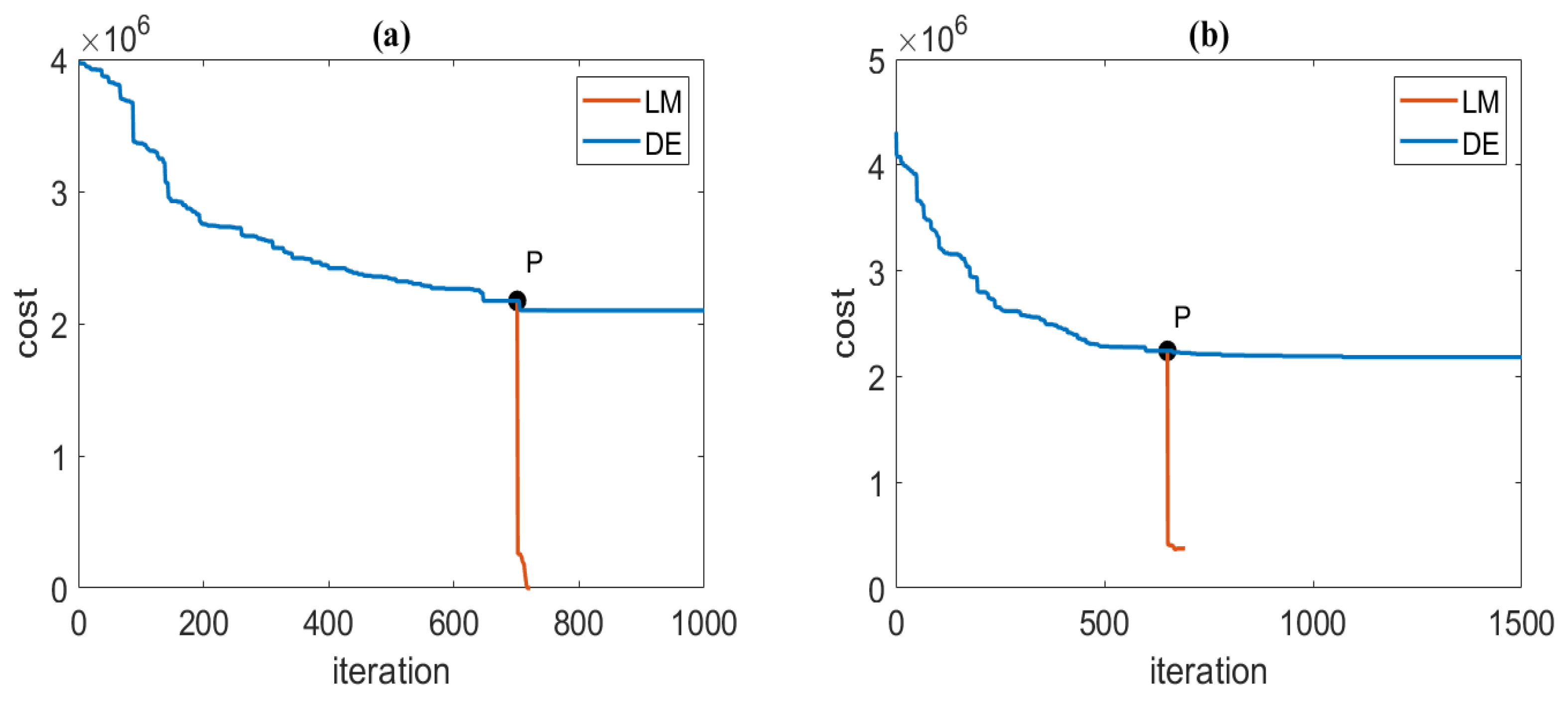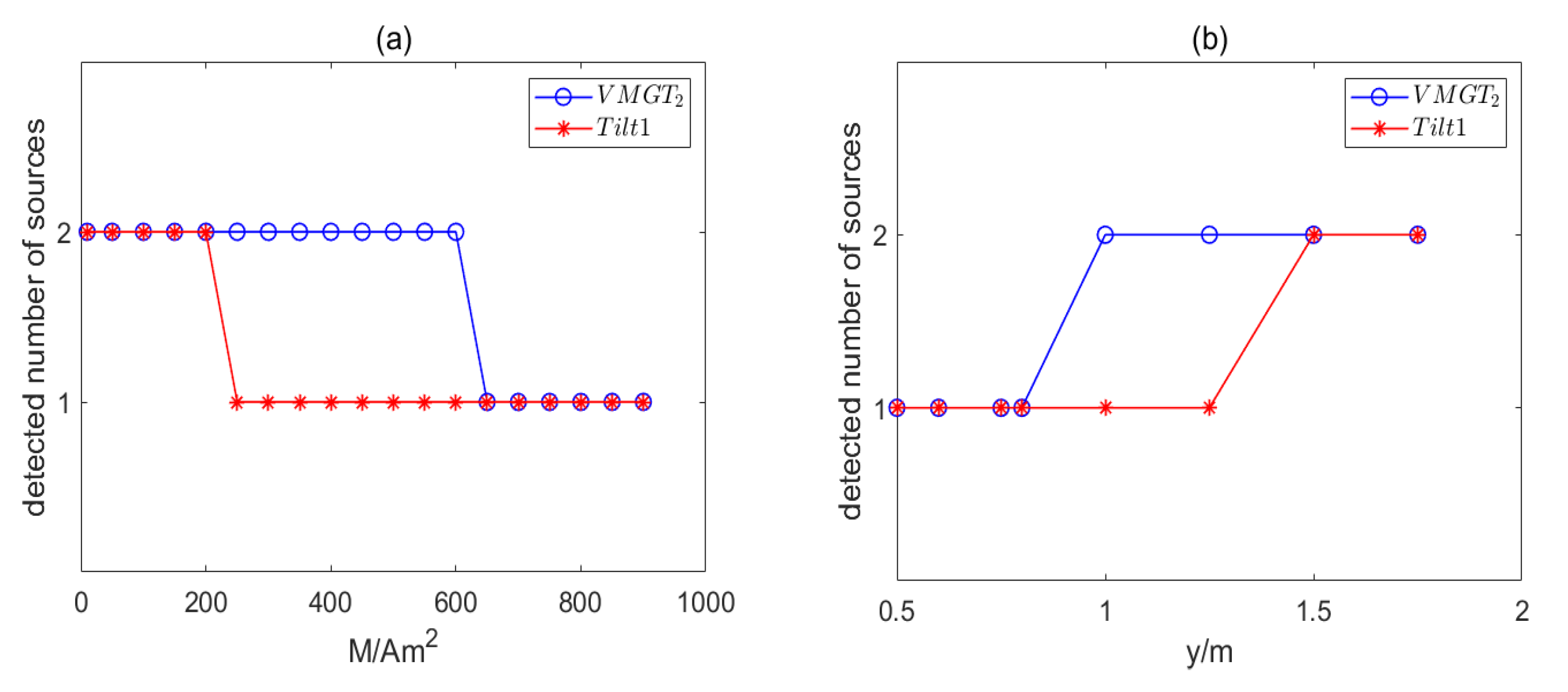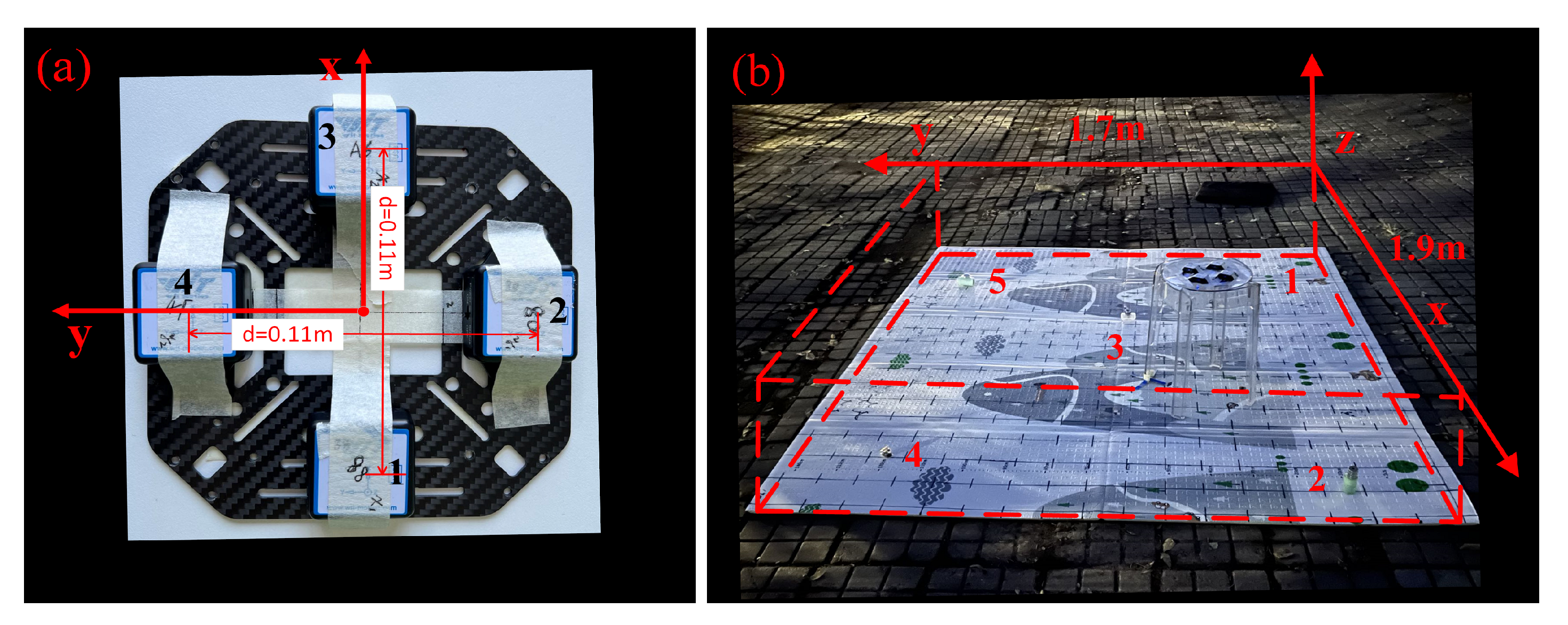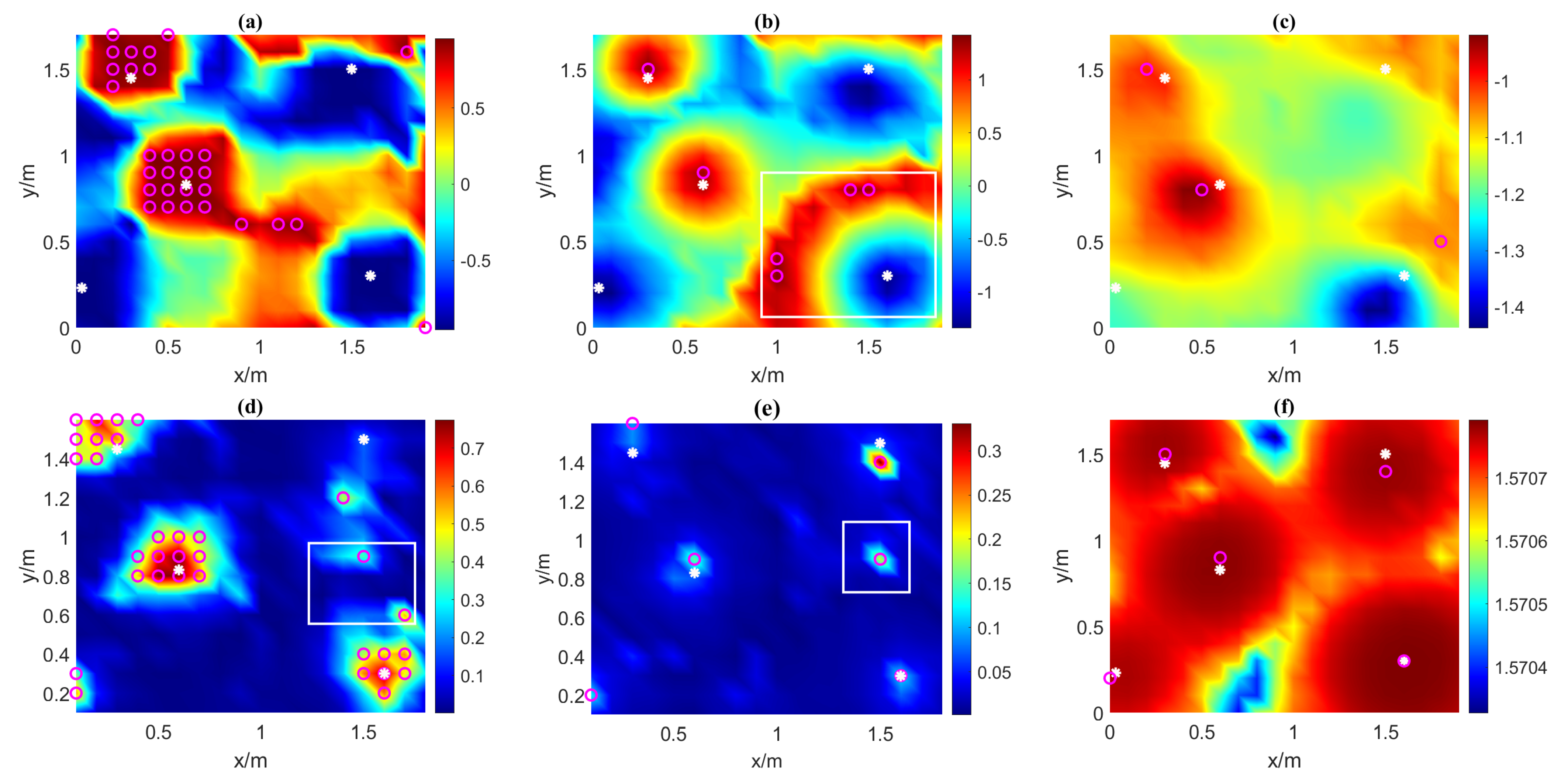1. Introduction
Detection, location, and classification (DLC) of multiple magnetic sources has important applications in unexploded ordnance detection [
1], exploration of mineral resources [
2], magnetic characterization of scientific spacecraft [
3], biological medical engineering [
4,
5], and other fields. Since the magnetic fields generated by multiple magnetic sources overlap and vary nonlinearly with the distance, the DLC of multiple magnetic sources is challenging. Usually, the shape and size of the magnetic source are different. When the distance between the magnetic source and the measurement point is 2.5 times larger than the source length, the magnetic source can be regarded as a dipole-like magnetic source [
6]. A single dipole-like magnetic source contains six parameters to describe its position information
and magnetic moment information
. Therefore, the DLC of multiple magnetic sources can be transformed into the problem of detecting the number and solving parameters of multiple dipole-like magnetic sources.
Several methods have been proposed for the DLC of magnetic sources. Yousefi et al. [
7] used the Levenberg–Marquardt (LM) algorithm to locate and classify magnetic objects. Carrubba et al. [
8] considered that the minimum value of the objective function corresponds to the correct number of dipole-like sources, so he searched for the quantity, location, and magnetic moment best matching the measured field by the particle swarm optimization (PSO) algorithm. However, this method is ill-posed and easily falls into a locally optimal solution. The magnetic gradient tensor (MGT) data contain more information about the magnetic sources, which can reduce the interference of the geomagnetic diurnal variation and the regional magnetic fields [
9,
10,
11]. With the maturity of measured MGT data [
12], there hass been more and more research on the DLC of multi-magnetic sources based on MGT data. Chang et al. [
13] added a parameter indicating the truth or falsity of the magnetic sources and optimized it jointly with other dipole parameters by the LM algorithm. This method increases the dimension of the parameter space, making it challenging to meet the engineering requirements with the DLC of multiple magnetic sources. Gang et al. [
14] first used the tilt angle to detect the number of magnetic sources. They used a stepwise method to locate and classify magnetic sources based on MGT data. Ding et al. [
15] improved the tilt angle and combined the stepwise method with the differential evolution (DE) algorithm to solve the parameters of the magnetic source. The tilt angle was proposed by Miller [
16] for locating the potential field sources, which is applied under the premise that its value is positive above the potential field sources. However, this premise is invalid for the magnetic field. Based on the definition of the tilt angle, it is positive or negative depending on the magnetic inclination. If multiple magnetic sources with different positive and negative inclinations are in the detection area simultaneously, the estimated number of magnetic sources may have a high probability of error. Recently, Li et al. [
17] improved the tilt angle based on the normalized source strength (NSS) and the contraction tensor (CT). They used a threshold method to estimate the sources’ numbers. However, some outliers of the tilt angle exist between sources, which affects the correctness of the estimated number of magnetic sources. Setting a reasonable threshold is also challenging, requiring prior information about the magnetic source.
All of the methods above for solving the magnetic source parameters are either sensitive to the setting of the initial value of the parameters or have a slow optimization convergence speed. In the field of magnetic target tracking, in order to track the target quickly and accurately, the PSO-LM hybrid algorithm has been proposed and widely applied [
18,
19,
20]. This algorithm uses the PSO algorithm to iteratively optimize toward an approximate global optimal solution and then uses this approximate solution as an initial parameter and executes the LM algorithm. This hybrid method can improve the convergence speed while ensuring correctness, thus effectively avoiding the shortcomings mentioned above. In the DLC of multiple magnetic sources, when faced with a large number of magnetic sources, the PSO-LM algorithm has poor convergence due to the optimization ability of the PSO algorithm [
21]. The DE algorithm has been proved to be able to converge to the optimal solution with high precision [
15], but the convergence speed is slow, especially near the global optimal solution.
In order to improve the correctness of detecting the sources’ number and quickly converging the parameters to a high-precision global optimal solution, we first calculate the local maximum of the VMGT
angle to estimate the number of sources. Then, we use the NSS to narrow the search space of the horizontal position parameters of the magnetic source and combine the DE and LM algorithms to optimize the parameters of the magnetic source. The overall process of our methods is shown in
Figure 1.
This paper is organized as follows. In
Section 2, a detailed description of our methods is presented.
Section 3 validates the proposed algorithm through simulation and real experiments. Finally,
Section 4 concludes this paper with some remarks and future research directions.
4. Conclusions
This paper proposes a new method for DLC of multiple dipole-like magnetic sources based on MGT data. Firstly, we propose the VMGT angle and use it to detect the number of magnetic sources in the area. Then, we use NSS to narrow the search space of magnetic source horizontal parameters. Finally, we use the DE-LM algorithm to optimize the parameters of magnetic sources to locate and identify magnetic sources. Through simulation experiments and a field demonstration, we verified that the method based on the VMGT angle can effectively solve the problem that the existing method based on the tilt angle cannot accurately estimate the number of magnetic sources when the detection area contains sources with positive and negative inclinations simultaneously. At the same time, we compared the convergence ability and convergence speed of the DE-LM algorithm, the PSO-LM algorithm, and the DE algorithm. The result shows that the DE-LM algorithm can improve the convergence speed, while ensuring the high-precision parameter solution in the DLC of multiple dipole-like magnetic sources. The experiment result shows that our method can correctly estimate the number of magnetic sources when the detection area contains sources with positive and negative inclinations simultaneously. For noise-free cases, the DE-LM algorithm converges to a high accuracy solution mm, , and the convergence speed was improved by more than three times from the DE algorithm. For cases of Gaussian random noises, the parameter optimization accuracy of the DE algorithm and DE-LM algorithm was similar, but the DE-LM algorithm’s convergence speed was 7.105 times faster than that of the DE algorithm. In the field demonstration, the position error of the magnetic source based on the DE-LM algorithm was mm. These results mean that the DE-LM algorithm can improve the convergence speed, while ensuring the high-precision parameter solution in the DLC of multiple dipole-like magnetic sources.
Although our proposed method has some ability to detect mutually interfering (due to the dipole moments of magnetic dipoles differing significantly or the distance between magnetic dipoles being close) magnetic sources, as the interference increases, it is difficult to correctly estimate the number of magnetic sources, which is a common problem in existing methods. In the future, we will study high-resolution methods for detecting mutually interfering magnetic sources.
